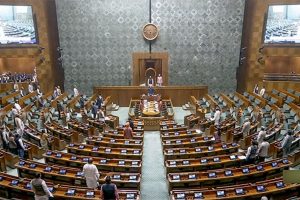The Bureau of the FIFA Council agreed on a proposed slot allocation among the six confederations for the World Cup 2026, which will witness 48 teams in the finals.
According to the proposal on Thursday, the split of 46 direct berths will see Asia get eight direct slots up from the four and a half spots they have currently, reports Xinhua news agency.
Advertisement
Africa will get nine slots while CONCACAF, which represents north and central America will get six. Oceania, which currently has half a slot wherein the top nation from the regional qualifiers faces a play-off against the fifth country from either South America or Asia, will get a full slot.
CONMEBOL, which represents the South American zone, will get six slots, up from the current four and a half while Europe will get 16.
The host country will also automatically qualify and its slot will be taken from the quota of its confederation.
In the event of co-hosting, the number of host countries to qualify automatically will be decided by the FIFA Council.
The last two berths will be decided through a play-off tournament involving six teams, one from each confederation except UEFA, plus one more from the confederation of the host country. Two of the six teams will be seeded based on the FIFA World Ranking and they will play against the winners of the first two knockout games involving the four unseeded teams.
The play-off tournament will be played in the host country in November 2025 and will also act as a test event for the World Cup.
The Bureau of the FIFA Council, composed of the FIFA president and the presidents of each of the six confederations, made the recommendation at its meeting in Zurich on Thursday and the proposal will be submitted for the ratification of the FIFA Council, whose next meeting is scheduled for May 9 in Manama, Bahrain, two days prior to the 67th FIFA Congress.
In January, the FIFA Council unanimously decided on expanding the FIFA World Cup to a 48-team competition from its 2026 edition.
Since then, FIFA, the six confederations and the member associations engaged in a consultation process, which resulted in the proposal above.











